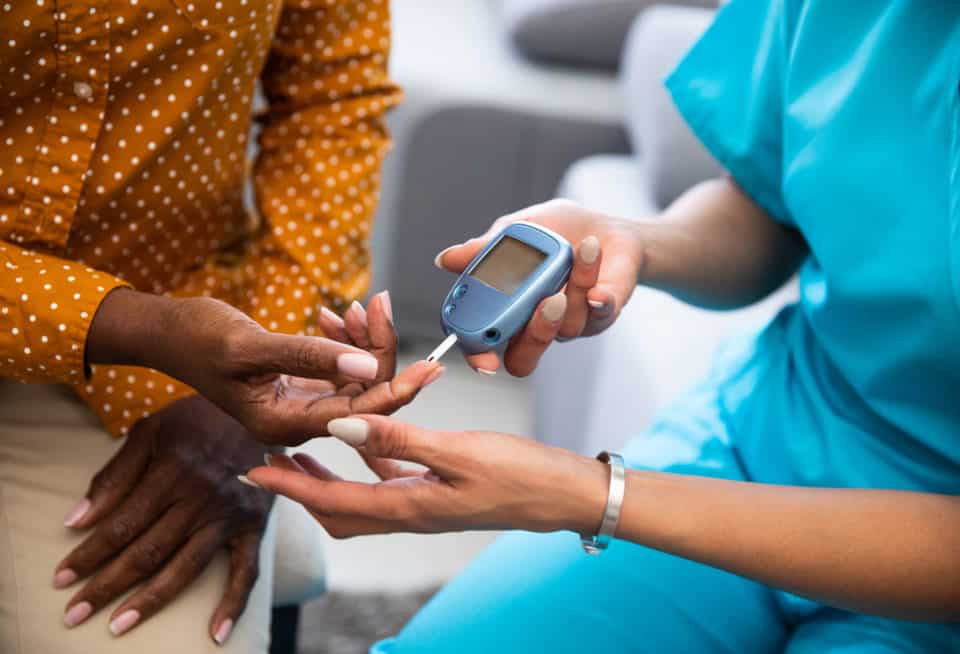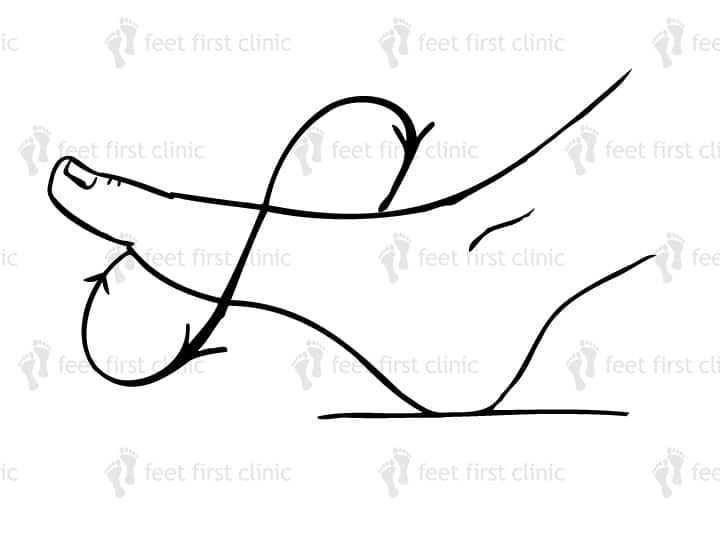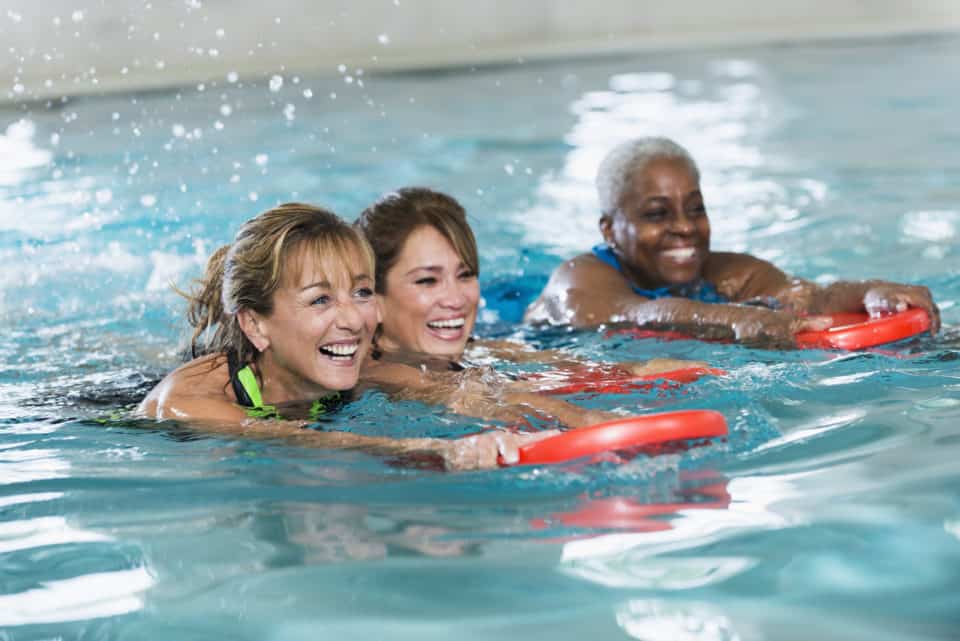People with diabetes need to be extra vigilant regarding foot care, physical activity, and overall health. The healthier and more fit you are, the less likely you will suffer from diabetes-related foot ulceration, which can limit joint mobility and cause foot deformities. NCBI also states that “a deficit of balance, posture and biomechanics can be present, in particular in patients at high risk for ulceration.” If this concerns you, it’s extremely important to incorporate simple stretches and exercises for diabetes into your routine.
Easy foot stretches and exercises that put your feet in motion can help people with two main diabetes-related complications: diabetic neuropathy and peripheral vascular disease (PAD).
What are Diabetic Neuropathy and PAD?
Diabetic neuropathy causes nerve damage, which leads to a lack of sensation in the feet and lower legs. This can cause a tendency to misuse the muscles in our feet, so paying attention to them is key, even if you don’t feel what’s happening down there.
With PAD, excessive sugars in the bloodstream block our ability to maintain blood flow, leading to severe infections as wounds, cuts, and scrapes can’t get the nutrient-rich blood they need. Fortunately, routine, simple exercises (in addition to monitored foot care from a chiropodist) can work wonders helping diabetes patients improve blood flow and maintain their foot health.
Keep reading to learn the best foot stretches and exercises for people with diabetes. We’ll also look at low-impact cardio routines diabetes patients can enjoy. These exercises are all light, adaptable and can be easily incorporated into your routine.
Top Foot Stretches and Exercises for Diabetes
The best foot stretches and exercises for diabetes are routines that help with strengthening, balance, range of motion and stability. Today, we’ll talk about:
- Toe curls
- Single leg lifts
- Figure eights
Toe Curls: Foot Strengthening
Great for: strengthening the feet, improving balance and supporting arches.
How to:
- Sit on a chair with your back straight and feet planted on the floor.
- Using a towel or hand towel, scrunch your toes and grab the towel, pulling it towards you.
- Repeat five times per foot.
Modifications: Why not establish a full foot strengthening routine by utilizing your toes in other ways? Try incorporating toe splays and toe raises into the same routine. Like toe curls, they’re both straightforward, comfortable and highly beneficial.
Standing Single Leg Lift: Balance Focused
Great for: Improving balance, flexibility and stability. As a bonus, it’s a great way to strengthen your core and legs.
How to:
- Stand straight with your hands on your hips and your feet about a shoulder’s width apart.
- Place your weight on your right foot as you lift your left straight out in front of you. Refrain from bending your legs and keep your foot flexed.
- Lower your foot and repeat five times per foot.
Tips for balance: When working on balance exercises:
- Keep your eyes focused on a fixed spot straight in front of you.
- Engage your core muscles by clenching your abdominal muscles (our stabilizers are in our abdominal region, so by engaging these muscles you’ll strengthen your core and find it easier to balance).
- You can keep an object nearby to grab for safety, just in case you find yourself wobbling.
Figure Eights: Range of Motion
Great for: Monitoring and improving the range of motion in the ankles, improving balance and ankle stability.
How to:
- While sitting or standing, lift one foot while keeping the heel planted on the floor.
- Move your foot in a “figure eight” motion with the ball of the foot and the toes. Do as many reps as are you comfortable with – preferably five or 10 to start.
- Repeat with the same foot in the opposite direction.
- Repeat the whole process with the other foot.
Modifications: You can try this one without your heel on the floor if you’re comfortable.
More Exercises for Diabetes
If you have diabetes, you don’t have to sacrifice physical activity.
You can exercise in short intervals, and you don’t have to break a sweat or participate in highly intense activities. In other words, it can be easy! With diabetes, everyone faces different challenges. So the trick is to figure out what works best for you, which may involve trial and error.
Low-impact cardio exercises like swimming and walking can help people with diabetes manage nerve pain and loss of sensation. The key is safety, which eliminates the element of fear and vulnerability.
As long as you suit up with proper footwear that reduces shock absorption and protects your feet, walking can work wonders for diabetes patients. Going for a 30-minute light walk about five times per week can help you reach a goal of 10,000 steps per day (or close to it) and meet your aerobic exercise targets. If 30 minutes seems daunting, you can start with 5 minutes and work your way up gradually. Every little bit counts!
Swimming supports your bones and joints and keeps you moving without having to place pressure and weight on your feet. A truly underrated form of exercise, it gets your body moving without the pavement pounding.
Ellipticals and bicycles (stationary or actual) are similar to swimming in that you get an aerobic workout without putting stress on your joints. With an elliptical, your feet stay planted on the pedals, and you pedal while standing in a jogging motion, whereas with a bicycle you pedal while sitting . Both are great low-impact cardio exercises. According to Healthline, protecting your joints can help prevent and manage osteoarthritis, which is extremely common in people with type 2 diabetes.
Exercises for Diabetes: Important Tips to Remember
- You don’t need to break a sweat or tire yourself out. The key is to just get moving.
- Make your exercises fun! Try planning a low-impact cycling trip where you can rest at your final destination. You could also take a leisurely walk through the park or the beach. Especially during the summer, the sights and weather can make you forget you’re even exercising.
- Wear supportive diabetic footwear, namely orthopaedic footwear.
- Exercise and stretch in short intervals. Thirty minutes of cardio exercise is more than enough, and you can do foot stretches for 15 minutes once or twice per day.
- Try exercising and stretching at the same times every day. This will give you insight into how your exercise may cause blood sugar fluctuations and when the best time to exercise is.
Looking for More Resources on Exercises and Stretches?
- The Perfect Stretching Routine
- Feet First Clinic Stretches Pinterest Board
- How a Foot Clinic Can Help your Walking Adventures
- Supportive Footwear for Your Workout
- Top 12 Exercises and Stretches to Treat and Prevent Foot Pain














